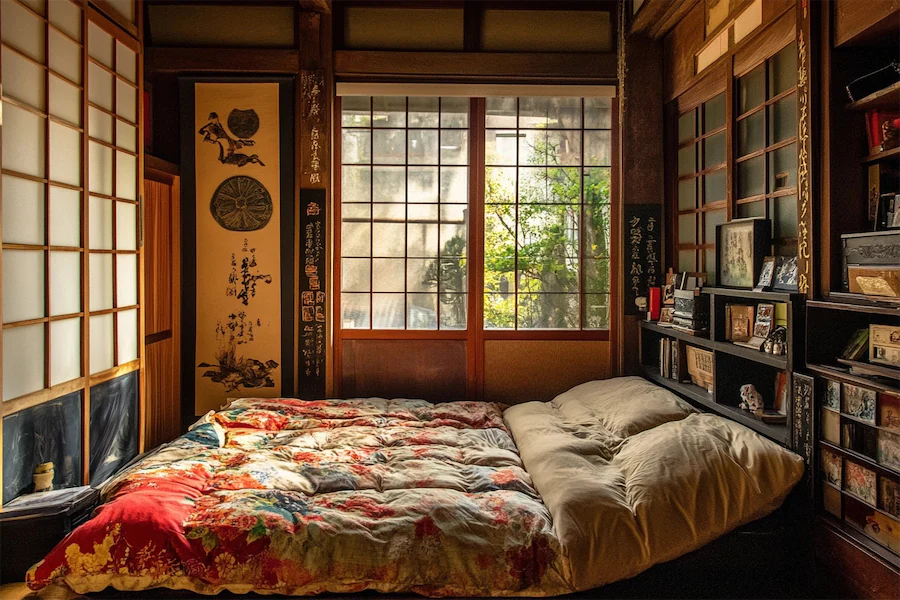A Japanese bedroom embodies the principles of minimalism, natural elements, and harmony, creating a tranquil space that promotes relaxation and mindfulness. This article explores the history, key features, applications, considerations, and concludes with insights into Japanese bedroom design.
Introduction to Japanese Bedrooms
Japanese bedrooms are designed to be serene retreats, emphasizing simplicity and a strong connection to nature. The minimalist approach, combined with traditional elements, fosters an environment conducive to rest and contemplation.
History and Origins of Japanese Bedrooms
The evolution of Japanese interior design reflects a deep-seated cultural emphasis on harmony, balance, and simplicity. Traditional Japanese homes utilized natural materials and open spaces, with rooms often featuring tatami mats and shoji screens. The Edo period (1603–1868) particularly influenced these design principles, promoting mindfulness and balance in living spaces.
Key Features of Japanese Bedrooms
- Minimalist Design: Japanese bedrooms prioritize uncluttered spaces, focusing on essential furnishings to maintain simplicity and order.
- Natural Materials: Incorporating elements like wood, bamboo, and paper fosters a connection to nature, enhancing the room’s tranquility.
- Low-Profile Furniture: Traditional futon mattresses placed directly on tatami mats are common, emphasizing a close-to-the-ground sleeping arrangement.
- Shoji Screens: Sliding paper doors (shoji) are used to partition spaces, allowing flexibility and the diffusion of natural light.
- Neutral Color Palette: Utilizing subdued tones such as beige, white, and natural wood hues creates a calming atmosphere.
Applications of Japanese Bedroom Design
- Urban Apartments: Incorporating Japanese design principles can maximize space efficiency and create a peaceful retreat within bustling city environments.
- Meditation Spaces: The minimalist and natural aspects of Japanese bedrooms make them ideal for meditation and mindfulness practices.
- Guest Rooms: Designing guest bedrooms with Japanese elements offers visitors a unique and serene experience.
Considerations When Designing a Japanese Bedroom
- Simplicity: Maintain an uncluttered environment by selecting multifunctional furniture and minimizing decorative items.
- Natural Light: Maximize the use of natural light to enhance the room’s serenity, utilizing shoji screens to diffuse sunlight softly.
- Quality Materials: Invest in high-quality natural materials to ensure authenticity and durability in design elements.
- Cultural Sensitivity: Incorporate traditional Japanese elements respectfully, acknowledging their cultural significance.
Conclusion
Japanese bedroom design offers a pathway to creating tranquil and harmonious living spaces. By embracing minimalism, natural materials, and traditional elements, one can cultivate a serene environment that promotes relaxation and mindfulness.
